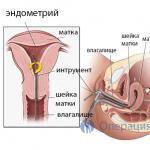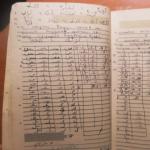Prague is the capital of the Czech Republic, a cozy European country with a relatively low price level and a huge number of attractions. This is an amazingly beautiful and elegant city.
Prague is rightfully considered one of the most mystical cities in the world: almost every building, architectural monument or street has its own mysterious and enigmatic history, which attracts tourists from all over the world all year round and in any weather.
While walking along the ancient streets of Prague, you get the feeling that you are in a fairy tale kingdom. Local restaurants and cafes attract tourists no less, enticing them with mouth-watering smells and reasonable prices.
Czech cuisine is famous all over the world, so tourists who are going to Prague allocate most of their time to the gastronomic program and are interested in advance about what they must try and what they can leave for later.
In the article, Kidpassage will tell you about the local culinary attractions, as well as how much food costs in Prague.
What to try in Prague from food
Czech cuisine has a very ancient history. It developed under the influence of its closest neighbors and adopted a lot from them. For example, goulash migrated to Czech cuisine from Hungary, schnitzel was borrowed from Austria, and stewed cabbage and roast goose with apples were borrowed from Germany.
Since Czech culinary traditions have mainly Slavic roots, you can find many soups and meat dishes prepared in the traditional way. However, sauces cooked according to traditional recipes add their own piquancy to the taste of dishes.
Nowadays healthy eating is fashionable in the world, but Czech cuisine does not fully correspond to its principles: all traditional food is high-calorie, filling and fatty. Dishes are usually served with dumplings and washed down with plenty of beer.
In this region, preference is given to preparing meat dishes: pork, veal, rabbit, turkey. First, the meat is marinated in various sauces with the addition of a large number of seasonings, and then stewed, boiled, baked or fried.
In a Czech restaurant, it can be very tempting to try everything at once. Don't rush to order several dishes, because the portions here are so large that one is more than enough for two. The food may not be as sophisticated as in French restaurants, but it is very filling.
Polévky (soups) are preferred to be rich, with an abundance of various seasonings. They can be so thick that they can easily be confused with sauces. Be sure to order some soup:
- Koprova polevka- dill soup with yogurt, served with sour cream and herbs.
- Dršťková polevka- pork tripe soup.
- Bramborová polevka- potato soup with smoked meats and mushrooms.
Hlavní chod, or second courses, are prepared from meat that has been marinated for a long time. Here are some dishes that are definitely worth trying:
- Pečené vepřové koleno- baked pork knuckle. A signature dish of traditional cuisine. If you order it, keep in mind that the serving weight is usually more than 1 kg.
- Pečene kachna- baked duck. The bird is cooked whole and served with sauerkraut.
- Svíčková nasmetaně- one of the most famous Czech dishes. This is beef or pork stewed in sauce. The main role in the taste is played by the sauce, which is prepared from stewed vegetables, whipped to a puree. Then sour cream and berry sauces are added to the sauce. This dish is served with dumplings.
- Hovězí guláš s knedlíkem- beef goulash with dumplings. The meat is stewed in a very thick gravy. Flour or potato dumplings are served as an accompaniment.
The Czech Republic is famous throughout the world for its beer. Here it has been brewed according to ancient recipes for several hundred years. One of the currently operating breweries was founded in the 12th century, it is still functioning, they brew beer here, which they call Chodovar.
This brewery is located in the famous restaurant in the rock “Hodovar”. Walking around Prague, you will come across beer restaurants everywhere, be sure to stop by and try one or more varieties, for example:
- Pilsner Urquell- the most famous beer, this is a light variety of golden color with a rich taste of malt and herbs, it has a slightly bitter aftertaste.
- Budweiser Budvar- deep fermentation beer, it is brewed from hops and Moravian malt.
- Bernard is a popular beer that has been brewed since the 16th century.
And incredibly tasty and aromatic snacks are served with beer. Here are some of them:
- Tlačenka- This is brawn made from meat and offal.
- Grilované klobásky- grilled sausages with a fragrant crispy crust.
- Pivni sýr obložený- beer cheese. An original snack made from bread, cheese, fish and onions.

How much does it cost to eat in Prague
When planning to travel around this country, most tourists wonder what to try in Prague and how much it will cost. If we compare prices relative to other European countries, we can say that here they are slightly lower than the European average.
But it should be remembered that this is the capital, and accordingly, food prices in Prague will be slightly higher than elsewhere in distant cities or in other Czech resorts.
The highest prices for food can be found in restaurants and cafes in the Prague 1 area. The most affordable lunches can be ordered in Prague 7, 9 and 10: in these areas, the main course will cost an average of 108 CZK.
In the capital of the Czech Republic you can find relatively inexpensive establishments: it’s worth going a little away from the tourist routes, taking a walk and at the same time seeing how the native Pragers live. You will be lucky if you find an establishment where locals prefer to eat.
The difference in prices is very large. For example, if in the center a lunch costs 500 CZK, then somewhere far from it, a few blocks away, a very filling lunch will cost 150-200 CZK.

In restaurants where there are many local residents, the portions will be much larger, the prices will be lower, and the service will be a little simpler than in establishments for tourists. In Prague you will always find places to eat to suit every taste and budget. The most inexpensive food in Prague is the one sold on the streets.
- It will be useful:
In the very center of the capital there are two squares: Old Town Square and Wenceslas Square. These squares, in addition to their architectural ensembles and medieval buildings, attract tourists with their mouth-watering spicy aromas.
There are stalls right here where you can have a hearty and tasty snack before visiting any attractions.
So, what to eat in Prague if you are hungry and don’t have time?
The most popular is Old Prague ham or Prosciutto di Praga - this is a pork ham roasted on a spit. Resourceful traders have come up with a trick for tourists: the price of a ham is about 80 CZK per 100 g, but a portion weighs at least half a kilo. And our no less resourceful tourists found a way out: they buy one serving for several people.

Among other snacks it is worth highlighting:
- Trdlo- 60-70 CZK. This is a very common Czech delicacy, at its core - a simple loaf of yeast dough, sprinkled with powdered sugar or nuts, which is baked on a wooden spit.
- Sausages- from 70 CZK per serving. They are grilled, coated with mustard and placed inside a bun.
- Bramborak- from 70 CZK for 300 g. This is a traditional dish that is very reminiscent of our potato pancakes.
- Smazak- from 50 CZK. Deep fried cheese, but the street version is a simple cheese sandwich.
- Beer- from 50 CZK for 0.5l.
- Coffee- from 35 CZK per cup.
It is impossible not to mention McDonald’s, BurgerKing and KFCA, popular among all tourists, where a standard menu will cost a little more than 100 CZK.
We cannot recommend these establishments for daily meals, but for an inexpensive snack in the city these options can be ideal, especially since the food here is always fresh, its composition has long been known to everyone, and they will feed you quickly, without queues or long waits for the waiter.
Lovers of fish dishes should pay attention to Nordsea fish bistros (). Salads, appetizers, main courses, seafood sandwiches - always high quality and inexpensive.
- Read also:
Prices in cafes and restaurants in Prague 2019
There is an opinion that if a tourist has not tried a single Prague dessert, then he has not been to Prague. On almost every street you can find a cozy pastry shop or bakery, where you can enjoy aromatic pastries or desserts, as well as drink a cup of coffee.
In the tourist center, as elsewhere, prices are somewhat inflated and a portion of dessert will cost 85-120 CZK, and average prices in coffee shops are approximately the following:
- American - from 25 CZK;
- latte - from 30 CZK;
- cheesecake - from 60 CZK;
- tiramisu - from 50 CZK.
If you want to visit a Prague cafe, then pay attention to some features that will allow you to eat deliciously and save a little money.
On weekdays, many cafes and restaurants offer “denny nabidke”. This is our business lunch option. A set lunch, which will include a main course, salad and dessert, will cost 150-200 CZK.
There are a large number of chain cafes in Prague: McDonalds, Starbuck’s, Illy caffe. As a rule, they are located in the central part of the capital, in any of the shopping centers.
Lovers of traditional Czech sweets should check out the Cafeteria in Mala Strana or the Ovocný Světozor confectionery chain, which is loved not only by city residents, but also by many tourists.
Desserts and coffee will cost a little more in such famous cafes as Slavia (Smetanovo nábřeží, 2), Louvre (Národní 22), Myšák (Vodičkova 6 31).
Be guided by prices in cafes by looking at the cost of a glass of beer. If this drink costs more than 40 CZK, then you won’t get a budget lunch. Another sign is what language the menu is written in. If in Russian, then the prices here are probably aimed at tourists and are greatly inflated.
Always keep an eye out for any extra snacks or baskets on your table that you didn't order. This is called a couvert. It usually looks like this: they bring you a basket with bread and pate or sauce.
You naively believe that this is a gift, and then it turns out that it cost 30-60 CZK. A couvert can also include a set of spices, sauces, and sometimes even cutlery. This is indicated on the menu, but in such small print that it is difficult to notice.
Tips are usually already included in the bill, but this is often not mentioned. So look carefully to see if there is the inscription “služby”, “service”, “přirážka”, “přirážka k ceně”, “10%”.
Here are the average prices in Prague cafes:
- soups - 40-60 CZK in the center and 30-40 CZK in other areas;
- boar knee - from 250 CZK;
- main course - 129 CZK in the center and 89-129 CZK in other areas;
- salad - from 50 CZK;
- chicken - from 60 CZK;
- fish dish - from 80 CZK;
- beer (0.5 l) - from 30 CZK;
- coffee - from 30 CZK.
The bill in a restaurant with good cuisine and a high level of service will be about 400-500 CZK. In places far from tourist trails, restaurants with the same level of service will offer you prices that are half the price.
Many Prague restaurants offer a daily menu for 90-150 CZK. Chinese restaurants with the same type of menu are also popular in Prague. The dishes here are large and inexpensive, starting from 70 CZK.
The best restaurants in Prague with Czech cuisine
In this city, catering establishments can be found literally at every step. But guests and travelers are usually curious to know what the best Czech restaurants are in Prague.
The Internet, upon request, produces huge lists of cafes and restaurants - and all of them are the best. It depends on the taste and color, as they say, but we will list the most famous and often found in tourist reviews places where Czech cuisine is presented in Prague.
Beer house "U Fleku"- the oldest and most expensive restaurant in Prague, the first mention of it in written sources dates back to 1499. And since 1843, the famous “Fleck” lager began to be brewed here.
There are no other types of beer in this restaurant. Each of the eight rooms is different in design, has its own name and history.

When ordering beer, it is customary here to place a glass of Becherovka in front of the guest without asking. It is believed that when combined with beer, it helps digest fatty foods.
But be careful: the cost of liquor is high and will definitely be included in the bill. The menu is very varied, the service is relatively fast. They say that the best Czech cuisine in Prague is prepared here. Approximate menu prices:
- boar knee - 420 CZK;
- beer cheese - 99 CZK;
- assorted cold appetizers - 149 CZK;
- fried sausages - 159 CZK;
- “Fleck” lager - 59 CZK;
- soup of the day - 69 CZK.
Address: Křemencova 1651/11, 110 00 Praha 1-Nové Město. The nearest tram stop is No. 5, Myslíkova. The nearest metro station is Národní třída, you need to walk 500 meters from it.
Restaurant U Bansethů- is known for the fact that one of the tables is always reserved for J. Hasek, who mentioned this establishment in his work “The Adventures of the Good Soldier Švejk”. This restaurant brews very tasty light beer. Traditional Czech cuisine at reasonable prices:
- goulash - 90 CZK;
- dumplings with homemade cracklings - 80 CZK.
Address of the establishment: Tborská, 389/49.
Restaurant-brewery U dvou kocek- here they offer delicious traditional cuisine for a small price:
- Česká bašta - 249 CZK (this is a huge dish with assorted smoked duck, pork and veal).
- Boar knee - 249 CZK.
Restaurant address: Uhelny, 10
Beer house "U Kalicha"- a popular restaurant that everyone knows from “The Adventures of the Good Soldier Schweik.” This is a tourist establishment with a legendary history and fairly high prices.
Beer House “At the Black Ox” (U Černého Vola)- a restaurant that locals love to visit, where you can feel the spirit of old Prague. Time seems to have stopped here, you find yourself in the past.
Address: Loretánské nám. 107/1, 118 00 Praha 1.
When choosing a place for lunch, you can navigate by prices by looking at the menu, which is usually hung in front of the establishment or displayed in the window. Be sure to compare the prices on the menu, because in the “Russian” version the prices are higher than in the Czech one.
This fact occurs quite often in restaurants in the tourist area. In those establishments that are visited by locals, it is not customary to do this. In the Czech Republic, it is also customary to sit at a table with strangers if there are no more empty seats in the establishment.
After receiving the check, do not rush to pay: re-read everything carefully and compare it with the menu. You may be assigned additional meals or beers.
Product prices 2019
In Prague there are many supermarkets of famous European retail chains such as Tesco, Globus, Kaufland, Makro, Billa, Albert, Lidl, Penny Market and others. The following is the average cost of food in supermarkets in Prague.
| Name | Weight (quantity) | Price, CZK |
|---|---|---|
| Vegetables and fruits | ||
| oranges | 1 kg | from 20.00 |
| bananas | 1 kg | from 25.00 |
| pears | 1 kg | from 40.00 |
| lemons | 1 kg | from 45.00 |
| strawberry | 1 kg | from 60.00 |
| apples | 1 kg | from 20.00 |
| tomatoes | 1 kg | from 30.00 |
| cabbage | 1 kg | from 15.00 |
| green onion | 1 bunch | from 10.00 |
| beet | 1 kg | from 35.00 |
| Champignon mushrooms | 1 kg | from 65.00 |
| potato | 1 kg | from 14.00 |
| bulb onions | 1 kg | from 14.00 |
| Dairy | ||
| milk | 1l | from 18.00 |
| sour cream | 200 g | from 28.00 |
| cheese | 200 g | from 25.00 |
| kefir | 0.5 l | from 18.00 |
| cottage cheese | 230 g | from 20.00 |
| hard cheeses | 1 kg | from 130.00 |
| Meat and meat products | ||
| chicken fillet | 1 kg | from 110.00 |
| pork | 1 kg | from 150.00 |
| lamb, beef | 1 kg | from 250.00 |
| chicken carcass | 1 PC | from 65.00 |
| smoked sausage | 1 kg | from 130.00 |
| sausages | 1 kg | from 150.00 |
| Bakery products | ||
| bun | 1 PC | from 4.00 |
| bread | 1 PC | from 22.00 |
| Other | ||
| eggs | 10 pieces | from 30.00 |
| Kozel beer | 0.5 l | from 11.00 |
| Budvizer beer | 0.5 l | from 15.50 |
| chocolate | 100 g | from 20.00 |
| juice in a bag | 1 l | from 25.00 |
| mineral water | 1.5 l | from 12.00 |
| Coca-cola | 0.5 l | from 26.00 |
Baby food in Prague
When going to Prague with a child, it is better for you to immediately plan the organization of your meals. If the child is very small, then problems may arise with finding mono-component purees.
In local stores you can easily find canned baby food, dry cereals and milk formulas from all world manufacturers. Please note that here meat purees are recommended from 4 months.

For families with children, it is most convenient to book apartments with a kitchen. Food prices in Prague are relatively low, so you could cook for the children yourself.
- It will be useful:
In Vietnam, you should definitely try steaming hot Pho. This is a spicy beef noodle soup.
Below you will find a list of 40 more dishes from different countries that you definitely need to try at least once in your life. Who has tried what from this variety? Bon appetit, by the way!
Treat yourself to a fantastic tasting menu at El Celler de Can Roca." This Catalan restaurant, located in Girona, Spain, was named the best restaurant in the world 2013. Including wine, the seven-course menu will cost $248.
Be sure to try the crispy falafel sandwich with vegetables in Israel. They say that Gabai and Ratzon falafels are so delicious that you will lick your fingers.
You'll enjoy a juicy steak at the famous Peter Luger Steakhouse in Brooklyn, New York.
Share paella with friends, saffron rice, seafood and chorizo, at Can Majó on the seaside in Barcelona.
Enjoy a fine Ottoman lunch at the 18th-century Ciragan Palace overlooking the Bosphorus in Turkey.
Take a chewy, delicious slice of Neapolitan pizza in Napoli, Italy.
Eat a crispy fish taco, Bahia style, cooked on the street in Los Cabos, Mexico.
Learn how to eat soup dumplings in Shanghai. First, you need to take the dumpling with chopsticks and dip it in soy sauce, then put the dumpling in a spoon, leaving room to scoop up the broth. Eat the soup with the dumpling.
The national Brazilian dish is feijoada. These are pieces of beef heart with pork and black beans.
Eat a crispy fried catfish, oyster or chicken po'boy at Po'boys in New Orleans, Louisiana. And if you really like adventure, then you simply must try the alligator sausage there.
A glass of Gelato ice cream from Grom will help you cool down. You can try it in any city in Italy - in Rome and Florence, in Milan and Venice, you can also find several shops outside the country.
Small bite-sized portions of all sorts of goodies in Hong Kong. Dumplings, pork and turnip pies, noodles and much more.
Enjoy warm and delicious arepas con queso (grilled cheese empanadas) in Cartagena, Colombia.
Try the Canadian dish Poutine, served in Montreal. These are French fries with brown gravy and cream cheese.
Taste the world's best sushi, Sukiyabashi Jiro, at the famous sushi restaurant featured in the documentary about the world's most famous sushi chef, Jiro Dreams of Sushi.
Dig into some BBQ ribs. Pork ribs roasted to a crisp at the famous Arthur Bryant's BBQ in Kansas City, Missouri.
Watch wildebeest over breakfast at the luxury Singita Grumeti tent in Serengeti, Africa.
Enjoy a bowl of asam laksa, a spicy and sour fish noodle soup in Penang, Malaysia.
Bite into a jelly-filled voodoo doll-shaped donut at Voodoo Doughnut in Prland, Oregon.
A bowl of Bahamian clam salad and a bottle of cold beer " Kalik will refresh you while you enjoy the sound of the waves and sink your feet into the sand of the Bahamas.
Have lunch at Alain Ducasse au Plaza Athe ne e" - perhaps the most sophisticated restaurant in Paris. The menu there changes depending on the season; a four-course tasting menu will cost you 380 euros (about $500).
Bite into a crispy empanada filled with meat, cheese or vegetables in Santiago, Chile.
Try the extravagant four-course tasting menu for $175 at Quay, Australia's most famous restaurant. For dessert you will be served the sweet “Guava snow egg” made from strawberries, guava, vanilla custard and meringue.
Inhale the aroma of lamb tagine, a sweet, rich stew from Morocco. Usually it is lamb with raisins, almonds and spices.
Treat yourself to a sachertorte, the most delicious Viennese chocolate cake in Austria. Vienna has long been famous for its pastry shops such as Cafe Landtmann and Demel.
Order cheesesteak in Philadelphia, PA.
Iconic Berlin food: Currywurst - pork sausage cut into pieces and topped with curry sauce. Served with a small soft bun.
Grab some fish and chips in London.
Sit down for breakfast in South India. There, for tea, you will be served masala dosa - a thin pancake with potatoes, onions and spices.
Every year more and more tourists recognize Vietnam, and vacationers are attracted not only by the warm sea and snow-white sandy beaches, but also by local attractions. Among them is the cuisine of Vietnam, which has a lot of features characteristic of Asia, but differs radically in many ways. Therefore, among the large number of offers from tour operators, there are many so-called culinary tours that bring together real gourmets who are accustomed to experimenting. What do they feed tourists, how healthy is the cuisine of this exotic country, and what can you taste in Vietnam?
Main differences and features of Vietnamese cuisine
From the moment Russian tourists began to discover Vietnam, many literally fell in love with the masterpieces of local culinary specialists. Vietnamese dishes are a symbiosis of the traditions of French, Chinese, Indian traditions and cuisines of other nations, while it is original and unique. It is also worth considering that the country stretches for several thousand kilometers, so the range of dishes offered may vary significantly depending on the region.
In the southern part of the country, there is a strong influence from neighboring Thailand, where they prefer to cook sour and sweet dishes, so the food in Nha Trang, for example, differs from that prepared in the North of Vietnam. Here, local chefs adhere to the main rule: food must be balanced, and a combination of five tastes must be observed. Therefore, all the dishes that the “northerners” prepare are at the same time sour, salty, spicy, sweet and moderately bitter. Harmony of flavors is the main advantage of Vietnamese cuisine. In general, there are great similarities with neighboring Thailand, where they also love fried rice and noodles, but there are differences, and you will understand this when you get acquainted with the range of dishes that you will not find in Thai cuisine. Here are some features of Vietnamese cuisine: 
- Vietnamese chefs use exclusively fresh ingredients to prepare their masterpieces;
- During cooking, products undergo minimal heat treatment, so the food is not only tasty, but also healthy.
- the national cuisine of Vietnam is not as fatty as in neighboring China, for example, where they use more fats, including oil, which is essential for frying;
- Unlike the Chinese, the Vietnamese use fewer spices, so the dishes are less spicy.
Due to the proximity of water, food in Vietnam has a “sea flavor”, as most dishes include seafood. According to rough statistics, local residents eat five times less meat than seafood. Therefore, we can say that this is a real paradise for lovers of squid, cuttlefish and other sea creatures. Many people are attracted to Vietnam by the prospect of trying rambutan and other exotic fruits, and it is best to do this in the fall, when prices for exotic fruits are reduced to a minimum. It's time to talk about the composition of the most popular dishes, and figure out what Vietnamese cuisine offers to try:
What dishes are worth trying in Vietnam?
Like in any other country, in Vietnam there are dishes that can be called national treasures, and there is also so-called “street food” or street food. The country's tourism infrastructure is developing at a rapid pace, so luxury hotels and chic restaurants offering gourmet cuisine are regularly opening here. You can organize a holiday here for any budget, since Vietnam offers different prices for food, but the quality of the dishes is always ideal. What local chefs are ready to surprise tourists with: 

It is difficult to list all the dishes within one description, as well as to say what prices are for food in Vietnam 2018, but in general the range of dishes in different regions differs slightly. All Vietnamese eat Pho Soup every day, Bun is also included in the daily diet, as are Nem pancakes. There are no particular differences between village dishes and those served in catering establishments, the only difference being that the products in the city are purchased, but in the countryside everything is your own, just like in Russia. 
Most of the Vietnamese live from tourism, so there are many places offering street food. You can often see makeshift stalls with freshly prepared dishes and exotic fruits literally next to houses. Naturally, in order to say how much it costs to eat in Vietnam, it is worth taking into account the price tags offered by street vendors, which cannot be compared with restaurants offering European cuisine and world culinary masterpieces.
Are there vegetarian dishes in Vietnam?

Speaking about how much food costs in Vietnam, I would also like to mention “vulnerable” tourists who do not accept food of animal origin. There are no establishments for vegetarians in the country as such, since there are few adherents of plant-based foods among the Vietnamese, with the possible exception of Buddhist monks. Meanwhile, there is quite a lot of plant food here, including hearty exotic fruits - a source of healthy vitamins and carbohydrates. Vegetarian dishes include tofu soy cheese served with vegetables.
How much does food cost in Vietnam?
Going on vacation to this previously unknown country, tourists ask themselves questions: what are the prices for food in Nha Trang 2018 and at other popular resorts in the country, and when can they save on food? Naturally, price tags depend on the level of the establishment; there is also no point in comparing prices in Phu Quoc with how much food costs in Vietnam in Ho Chi Minh City, where there is no such influx of tourists due to the lack of beaches. It is also important to know that during the high season, which begins in most resorts in winter or late autumn, food prices in Nha Trang, Phu Quoc and other resorts are significantly higher than in the off-season, and especially during the rainy season, which lasts from May until October, as a rule.
Important: Some Baikal cuisine dishes are prepared from raw fish. Whether it’s worth trying them is up to you to decide, but in any case, it’s better to order raw fish dishes from trusted restaurants.
It is also highly NOT recommended to try bear meat in any form, even heat-treated, if there is no veterinary examination. And in general, you should try meat dishes only if you are confident in their quality and safety for health.
Smoked omul
People on Lake Baikal love fish and prepare it in all possible ways - smoked, dried, salted, fried. Hot smoked omul, which is served in many cafes and restaurants, is especially popular. They also prepare dishes from whitefish and grayling. And the signature Baikal snacks are split and gadai (sagudai), which are prepared from raw fish. These dishes are definitely not for everybody.
Smoked omul can be ordered in a cafe or bought at the market in Listvyanka. But they recommend eating sagudai in restaurants - in Listvyanka or Irkutsk.
Buryat poses (buuza)
This is one of the main dishes of Buryat cuisine. The poses are somewhat reminiscent of the familiar dumplings, only large and with broth inside. Different meats are used for the filling - lamb, pork, beef, even horse meat. Some restaurants even add cuttlefish ink to the poses, giving them a rich black color.
And now about how to eat poses correctly. You're supposed to take a bite on the side first and drink the broth (be careful - it's hot!). And then eat as you please - eat the whole pose or leave the dough tail.
The poses are best prepared in cafes and restaurants of traditional Buryat cuisine. For example, this dish can be tasted in Irkutsk poznas and in Irkutsk datsan, as well as on Olkhon and Arshan. And poses with cuttlefish ink are served, for example, in the Buza cafe in Irkutsk. In some cafes you can also find fish poses.

Buhler and Shulen
Bukhler - the so-called rich stew with lamb, onions and herbs - is a very satisfying dish of Buryat and Mongolian cuisine. It is believed that the “correct” buchler is cooked from meat from different parts of the lamb carcass. Buhler is served on Olkhon and Arshan, as well as in restaurants and cafes in Irkutsk.

And another hearty soup of Buryat cuisine is shulen. It is prepared from lamb with homemade noodles, with the addition of green onions.

Game meat
On Lake Baikal they cook the meat of deer, wild boar, partridge, quail, and pheasant. Fried or smoked, boiled or stewed - for every taste. You can taste meat delicacies in Irkutsk restaurants that specialize in preparing game - for example, in the Okhotnikov Restaurant.

Tea with milk
A peculiar Buryat drink. To prepare tea, milk is used, as well as butter, flour and even salt. It turns out to be either a hearty drink or a light meal. Tea is used both black and green. Moreover, it is not just brewed, but boiled, mixed with milk, flour and salt. This dish is not for everyone, but if you are determined to try Buryat cuisine, you may want to finish your meal with tea with milk.

And if you just want to drink tea, it’s better to warn the waiter - in many establishments they can bring you Buryat tea with milk by default.
In many Buryat cafes you will be offered tea with Baikal herbs, sea buckthorn whipped, berry juice - the choice is yours.
What dishes of Buryat cuisine do you remember? Share in the comments!
Spanish food in the country itself is as much of a tourist attraction as the Sagrada Familia or, say, flamenco. It would be a big miss to visit here and not try the famous national dishes, even if you have to give up your usual diet to do this. The local cuisine is famous for its hearty dishes, which certainly do not fit into the Mediterranean diet.
A little about culinary preferences
The formation of Spanish cuisine was influenced by several factors:
- historical background caused by numerous conquests by different peoples;
- territorial location on the Mediterranean coast;
- climatic conditions.
A distinctive feature of everything that is eaten in Spain is the incredible nutritional value of the dishes that are prepared here. This characteristic has its roots in the distant past. After all, as you know, local cuisine was formed not in royal palaces, but in peasant families, in which the main task of each housewife was to cook a lot, tasty and satisfying. It is for this reason that in many dishes of local origin you can sometimes find the most incompatible ingredients, for example, seafood and chicken.
The second feature is the influence of many cultures that appeared here in different historical eras thanks to new conquerors - the Romans, Moors, and the Spaniards themselves. In addition, it should be noted that each individual Spanish region is unique, and they can be distinguished from each other precisely by the composition of the dishes and the menu as a whole.
National menu
If you don’t know what food to try in Spain, we recommend trying everything they serve. You definitely won’t be disappointed, and you won’t leave hungry either. It is simply impossible to list all the national treats, so we will focus on those through which the whole world learned about Spain.
This dish belongs to the category of appetizers. The name comes from the word “lid”. Once upon a time, travelers were treated to cool wine in large glasses, the top of which was covered with a piece of bread with cheese, meat or tomato so that the wind would not blow dust and sand into the container. Since then, such “lids” have become a regular treat in any bar where travelers drop by.

Today, tapas bars are not just a culinary phenomenon, but also an entertainment one. The main entertainment of local residents on Fridays is visiting such establishments, of which they can count at least a dozen in one evening.
Tapas are always served with beer or wine. The main ingredients are olives, tuna, almonds, jamon, marinated pork, and cheese. The base can be a piece of bread, which is incredibly tasty in Spain.
In your list of what dishes to try in Spain, be sure to include gazpacho. This is a vegetable soup, which is mainly prepared from tomatoes, and is not subject to heat treatment. Cool gazpacho is especially good in summer. Its recipe is very simple: pieces of bread are soaked in water, then mixed with tomatoes, olive oil, garlic, and seasonings.

Caring housewives usually prepare this treat in the evening. First, to let it sit overnight. Secondly, so that the soup reaches the desired temperature. If you find it not cool enough, you can add ice cubes to it.
Paella was invented in Valencia. It was here that the first dish was prepared, which the whole world now enjoys eating. The peculiarity of paella lies in the combination of the most contradictory products.

The basis of paella is rice - one of the main ingredients in Spain, which is included in most dishes. It is prepared in a special frying pan from many ingredients - rice, chicken, seafood, white wine, spices, herbs, fish. In total, there are more than 300 recipes for this treat in the country. In some regions, rice is replaced with beans, another popular national product. But classical technology is still based on the use of rice.
Jamon has long been loved by gourmets all over the world, and you can already find it on the shelves of almost all stores. But you can only try real jamon in Spain itself. This product is a smoked pork ham, which is prepared using a special technology. The whole process takes at least a year.
It is believed that the ham is prepared from a special Iberian breed of pigs, which is fed exclusively on acorns. It is for this reason that jamon has a pronounced nutty taste.
The national food in Spain also includes incredibly delicious desserts, representatives of which are Catalan cream and turrones. The latter, by the way, were inherited by the Spaniards from the Arabs and are nougat made from egg whites, honey and various types of nuts.


















